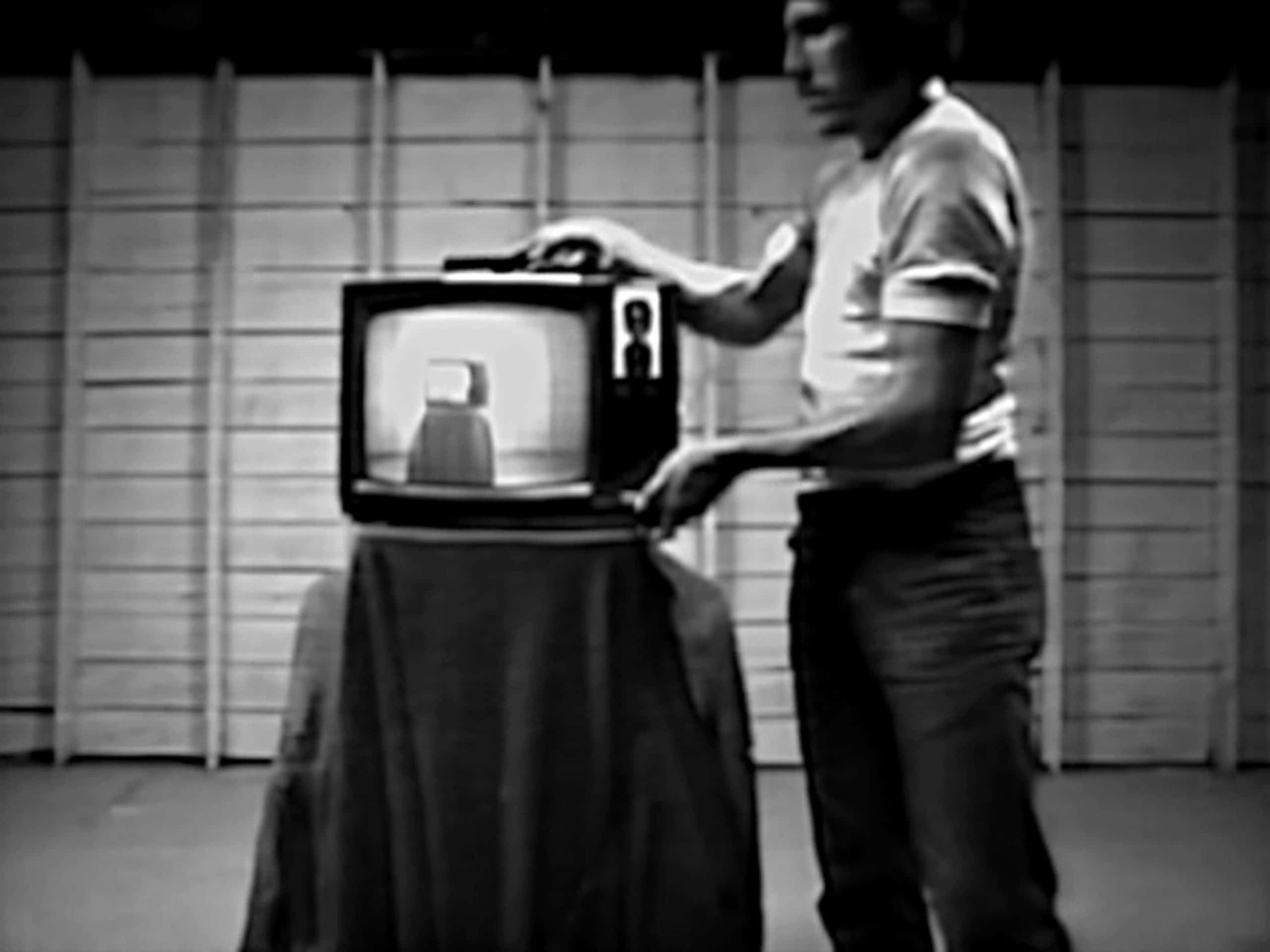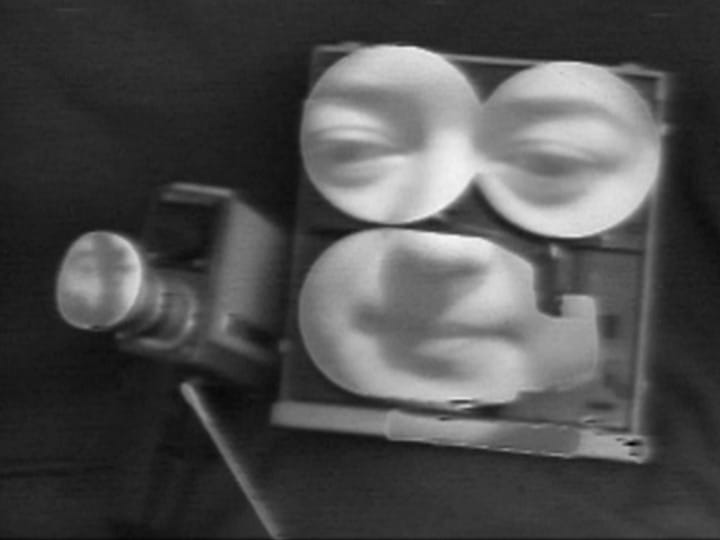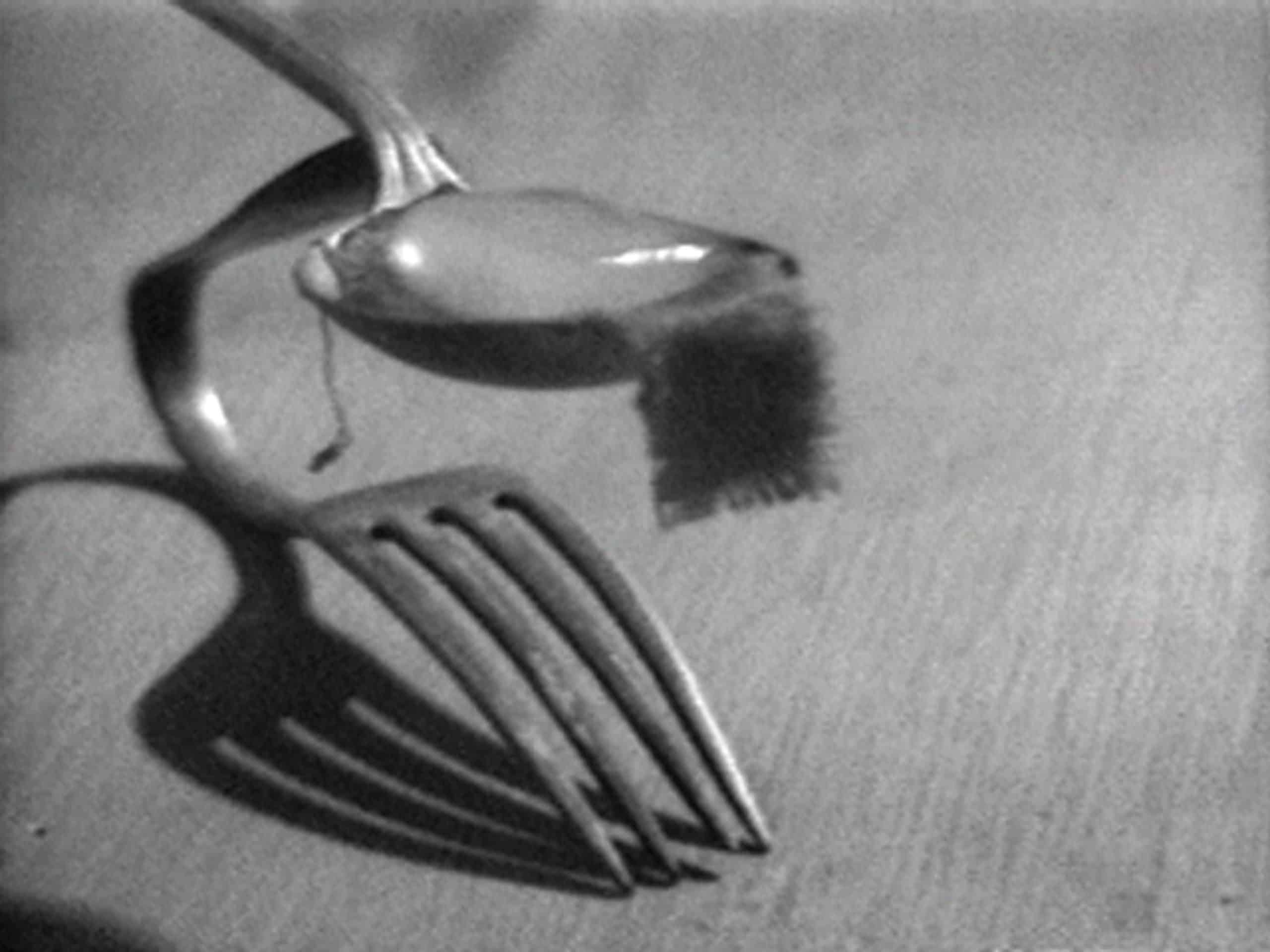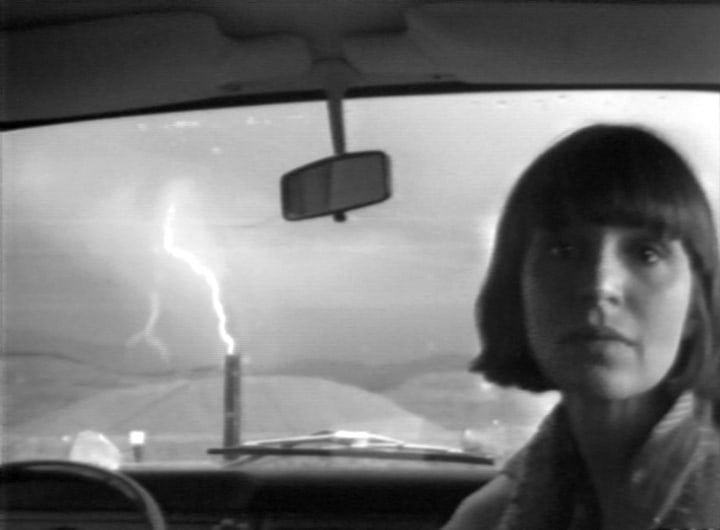If I were to pick a medium that best reflects the present era, it would definitely be video. Not only is it everywhere — it defines the very way we experience reality. It’s universal, democratic and inevitable. The current exhibition at Zachęta National Gallery of Art in Warsaw showcases the early phase of video art — the first decade (late 60s and early 70s) during which the boundaries of the medium were explored and pushed forward. This chapter of history has proven to be crucial for the subsequent evolution of art, but maybe more importantly, the early strategies of video artists paved the way for our present interactions with media. The acute actuality of these works becomes self-evident once one delves into the show.

James Byrne, Translucent, 1974, 2’15”, courtesy of Electronic Arts Intermix (EAI), New York
‘Videotapes. Early Video Art (1965-1976)’ devises a comprehensive synthesis of the pioneering days of video art. In fact, it attempts to reconstruct the way it functioned back in the 60s and the 70s: bright daylight flows into the exhibition rooms, cluttered with bulky CRT television sets. It’s a rare occasion to experience these artworks (often seminal) on screens they would usually be shown on. The definition of video proposed by the show is rather strict, nearly orthodox — it refers only to films recorded on a magnetic video tape. While this may seem inaccurate given the diversity of film recording options now, it allows to focus on the creations that sprang up from the revolutionary, cheap and easy technology of portable cameras. The exhibition is divided into 4 parts tracing different themes explored by early video artists: the camera itself, existential experience, conceptualism, and body. The rise of video art coincided with tides of conceptual and performative practices while the old paradigms of materialized objects had just begun to ebb away. This synchronicity is an indicator of major shifts within Western conceptions of contemporary art — shifts that video artists actively took part in. The exhibition catches this experimental spirit of early video art — when it still operated outside the circuits of institutions, markets and distribution. The sheer enthusiasm of artists delving into a new medium is clearly detectable in the first room, devoted to auto-thematic pieces. Works such as ‘Now’ by Lynda Benglis or ‘Portapak Conversation’ by the collective Videofreex reveal deep fascination with possibilities of the new technology, while critically scrutinising its limits and relations with the so-called reality. Importantly, these works hold relevance till this day, as the investigations they undertook appear true and accurate in relation to the state of video practice now. The virtual, uniform space of video is brought to the edge of absurdity in the piece by Joan Jonas ‘Left side, Right side,’ wherein the deictic centre is abolished and absolute relativity is proclaimed in its place. With these early reflections on the nature of video, the understructure of our complex relation with this medium had been sketched out.
The works gathered in the following room touch upon the theme of existential experience as it is caught and distributed via video tapes. Since this technology allowed for cheap and easy recording and then dissemination of the material, it became rapidly popular. Therein also lies the essential difference of video as opposed to the considerably complex and expensive technology of celluloid films. No wonder then that video soon became a carrier of socially engaged messages and artists’ favourite method of audiovisual registration. A whole new range of works emerged thanks to this technology — effortless, simple notation of reality, often with a socially important message. The curator’s note likens this aspect of video to a sketch or drawing, while Douglas Davis, American video artists and teacher, finds cameras similar to a pencil. Julie Gustafson’s ‘The Politics of Intimacy’ exemplifies this new genre, gathering accounts of female sexuality and self-image as it is shaped and affected by social expectations. Despite nearly 50 years between the production of the piece and the current moment, its radical, feminist character still resonates with inquietudes incessantly surrounding the notion of femininity and women emancipation. Another brilliant example of this organic casualness of video is ‘Coal Confession’ by Ilene Segalove, in which the artist confesses to having plagiarized a 5th grade essay. This witty short film revolves around the motionless camera, which assumes its inherent surveillance power, and the artist herself, whose subjectivity is brought under investigation. Her autobiographical tapes shed some light on the way users engage with videos nowadays through social media, streaming services and other platforms — the tension between performance, creation and surveillance, present in her works, remains uncannily the same today.
Videofreex, Portapak Conversation, 1973, 8’30”, courtesy of Video Data Bank at the School of the Art Institute of Chicago
Shigeko Kubota, My Father, 1973–1975, 15’30”, courtesy of Electronic Arts Intermix (EAI), New York
Then, the show offers a deep dive into the classic period of conceptual art, with pieces by stars like John Baldessari, Lawrence Weiner, Terry Fox or Martha Rosler. The works included in this section chronicle dematerialization of the work of art into a mere idea — or, better said, its transmutation to its most basic form. The chunky tv boxes and video players stored above them poignantly demonstrate materiality of these creations, intensifying the tension that is present in the entire show. Don Burgy’s ‘April 21, 1973’ breaks down the interrelations driving the artistic industry by comparison to an ecological network of forest. His piece also provides the only artifact present at the exhibition — the original script of his monologue. The presence of this object equates in importance all material manifestations of the same conceptual piece. Video then appears here as a simple means to articulate the concept rather than as an art discipline as such. Nonetheless, selected works typify a major movement within video art, in which this medium served as an audiovisual sketch or notation of a larger, abstract idea. With stellar contributions by Józef Robakowski, Valie Export and others, this section constitutes a show within a show, an outstanding presentation of classic conceptual artworks.
The exhibition concludes with a set of works centered around the notion of body. Corporeality as it is portrayed by these early video artists is diverse and radical, tender and brutal. Many artworks share a vocal feminist agenda, while other explore the materiality of the body through the lenses of a camera. Cynthia Maughan’s three short films establish an uncomfortable proximity to the beholder, laying bare her scars and physical flaws. Similarly, Leticia Parente’s ‘Trademark’ unsettles the viewer with the recording of subtle self-violence. Susan Mogul’s (“Dressing Up”) ingenious video-performance appears as a precursor of contemporary social media performative practices, while touching upon consumerism and female emancipation. Vito Acconci’s ‘Sounding Board’ furthers instrumental understanding of body, literally transforming the artist into a resonance board, as he lays down naked on speakers playing loud jazz music. The circular arrangement of tv monitors resembles a pilgrimage route or a ritual setup, which even heightens the impression of powerful bodily presence transmitted through the videos.

William Wegman, Spelling Lesson, 1973–1974, 49”, courtesy of Electronic Arts Intermix (EAI), New York
The show is a monumental ode to video itself — in McLuhan’s spirit, the very medium assumes enough importance to become its own message. This reflection on the possibilities and boundaries of video is more relevant than ever now that it has become the tissue of our everyday lives. As one wanders between the rooms, the glimmering light of kinescope tv monitors triggers nostalgia — yet the persistent power of the exhibition lies in the simplicity and ingenuity of early video art.
‘Videotapes. Early Video Art (1965-1976)’
15.02 – 14.06.2020
Zachęta – National Gallery of Art in Warsaw
curator: Michał Jachuła
collaboration: Julia Leopold
exhibition design: Wojciech Popławski (OP Architekten)
Terry Fox, Children’s Tapes, 1974, 30’, courtesy of Electronic Arts Intermix (EAI), New York
Letícia Parente, Preparation, 1975, 3’30”, courtesy of Galeria Jaqueline Martins, São Paulo
Paul Kos, Marlene Kos, Lightning, 1976, 1’23”, courtesy of Video Data Bank at the School of the Art Institute of Chicago;
Throughout the film the protagonist repeats two sentences: ‘When I look for the lightning it never strikes. When I look away it does.’













